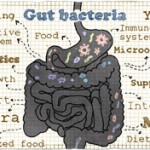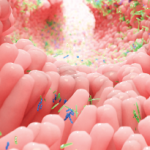The researchers evaluated the microbiota via 16S rRNA sequencing of fresh fecal samples every seven days during CIA. They classified the results with SINA using the 418,497 bacterial sequences in Silva 115NR99 as a reference configured to yield the Silva taxonomy. The investigators also used qPCR to determine total bacterial load and normalized the resulting concentrations to fecal weight. In each case, they compared individual samples with the mean concentration of bacteria in control mice to calculate the percentage of control microbiota.
In addition to measuring the gut microbiota, researchers evaluated the integrity of the intestinal barrier. They did this on Days 14 and 35 by determining the permeability of the gut to fluorescently-labeled (FITC) dextran. They first orally gavaged mice with FITC-dextran and then measured the amount of FITC-dextran in the serum four hours later. On Day 35, they performed a histopathology of whole colon tissue on the mice to quantify inflammatory cells in the lamina propria, as well as the number of mitotic figures and length of crypts.
The researchers found that early in CIA—even prior to visible arthritis—their mice had significant dysbiosis and mucosal inflammation. Moreover, the mucosal inflammation in the intestine evolved continuously and paralleled the dysbiosis throughout the development of CIA. When they evaluated cytokines in tissue lysates and serum, they found elevated IL-17A, IL-22 and IL-23 as early as Day 14. The expression of these inflammatory cytokines also paralleled the dysbiosis and mucosal inflammation.
Antibiotics Improved Disease Severity
When the investigators treated the mice with broad-spectrum antibiotics (ampicillin, neomycin, vancomycin and metronidazole) prior to the induction of CIA, they found that the treated mice had an approximately 40% decrease in disease severity relative to untreated mice. The mice also generated reduced quantities of anti-CII antibody and had impaired inflammatory Th17-derived cytokine responses. The results seemed to suggest that the microbiota influenced the severity of CIA via modulation of mucosal and systemic cytokines and autoantibodies.
“In the setting of a reduced microbial load, we note significantly decreased CIA disease prevalence and severity,” write the authors in their conclusion.
The investigators were most surprised to discover that when they treated the mice with antibiotics during the late phase of CIA, they achieved a greater than 90% decrease in disease severity. Although anti-CII antibodies were only mildly reduced as a result of this later treatment, the antibodies appeared to have a significantly decreased ability to activate complement.


